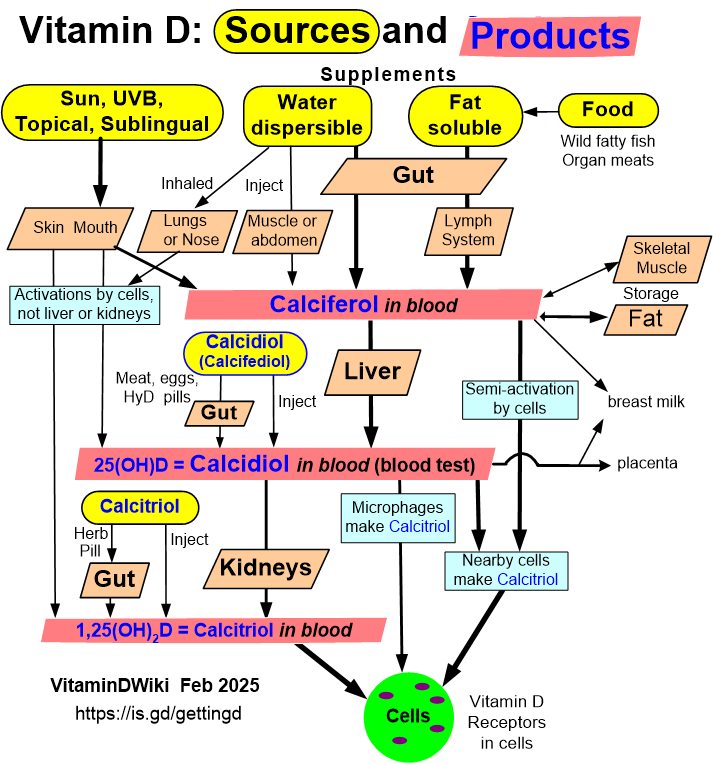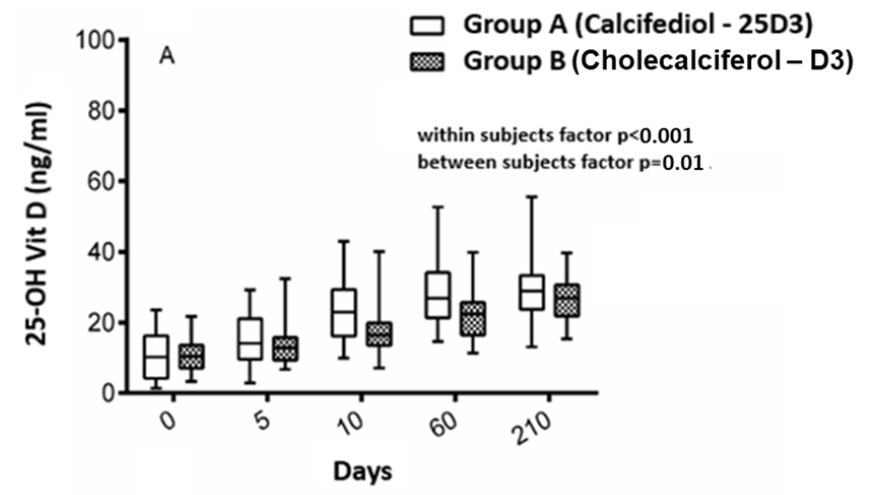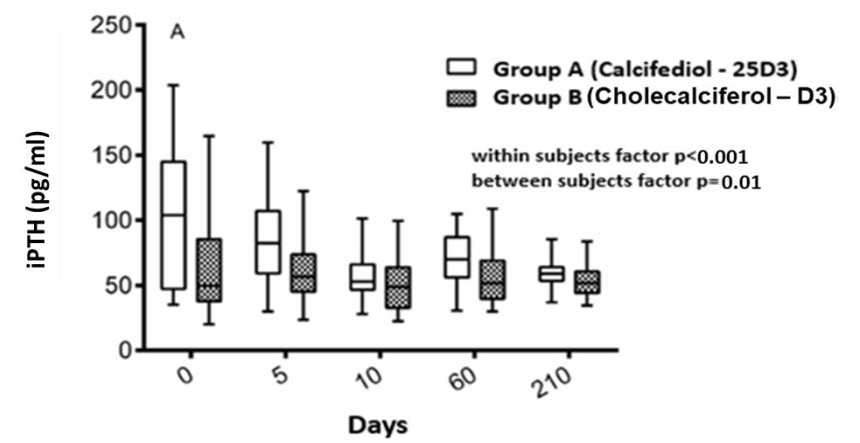Weekly response to semi-activated vitamin D slightly better than standard – RCT
Effects of Weekly Supplementation of Cholecalciferol and Calcifediol Among the Oldest-Old People: Findings From a Randomized Pragmatic Clinical Trial
Nutrients. 2019 Nov; 11(11): 2778. online 2019 Nov 15. doi: 10.3390/nu11112778
Carmelinda Ruggiero,1,* Marta Baroni,1 Vittorio Bini,2 Annalisa Brozzetti,2 Luca Parretti,1 Elisa Zengarini,3 Maria Lapenna,1 Pierluigi Antinolfi,4 Alberto Falorni,2 Patrizia Mecocci,1 and Virginia Boccardi1

📄 Download the PDF from VitaminDWiki
Note: Same 150 micrograms was given to both groups
150 micrograms of Vitamin D = 6,000 IU

iPTH Response ( lower is better)

Vitamin D inadequacy is pervasive in the oldest-old. Many vitamin D metabolites are available for supplementation, their effects on the recovery of adequate serum levels remain unknown. We investigate the effects of supplementation with cholecalciferol (D3) and calcifediol (25D3) on serum levels of 25(OH)D, 1-25(OH)D, bone and inflammatory markers, ultimately identifying clinical predictors of successful treatment.
Sixty-seven oldest-old individuals were randomized to weekly administration of 150 mcg of 25D3 or D3, from hospital admission to 7 months after discharge. Supplementation of 25D3 and D3 were associated with increasing serum levels of 25(OH)D (p < 0.001) and 1-25(OH)D (p = 0.01).
Participants on 25D3 experienced a steeper rise than those on D3 (grouptime interaction p = 0.01), after adjustment for intact parathyroid hormone (iPTH) levels the differences disappeared (interventioniPTH interaction p = 0.04).
Vitamin D supplementation was associated with a decreasing trend of iPTH and C-reactive protein (CRP) (p < 0.001). Polypharmacy and low handgrip strength were predictors of failure of intervention, independent of vitamin D metabolites.
In conclusion, D3 and 25D3 supplementation significantly increase vitamin D serum levels in the oldest-old individuals, with a tendency of 25D3 to show a faster recovery of acceptable iPTH levels than D3. Polypharmacy and low muscle strength weaken the recovery of adequate vitamin D serum levels.
